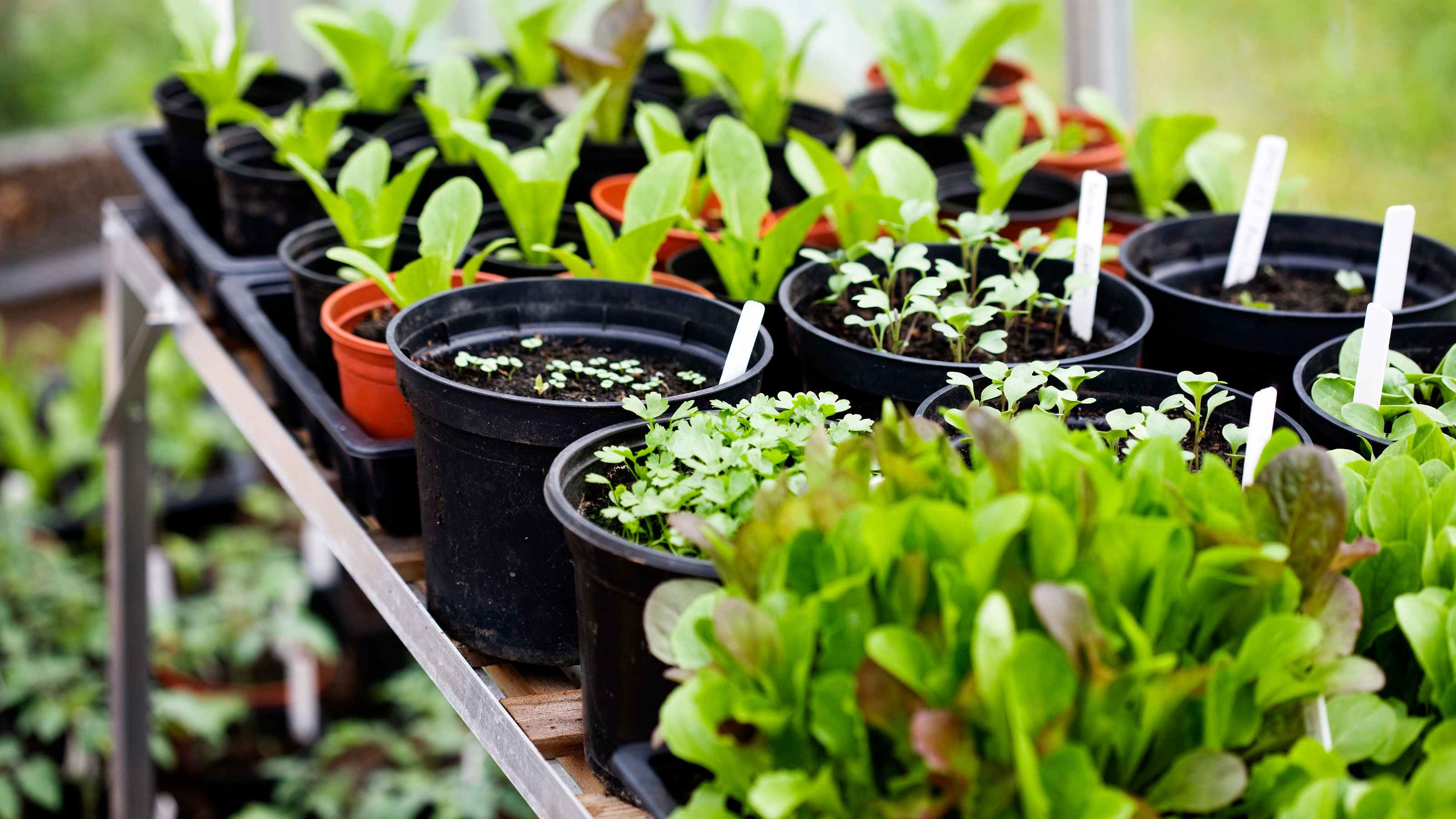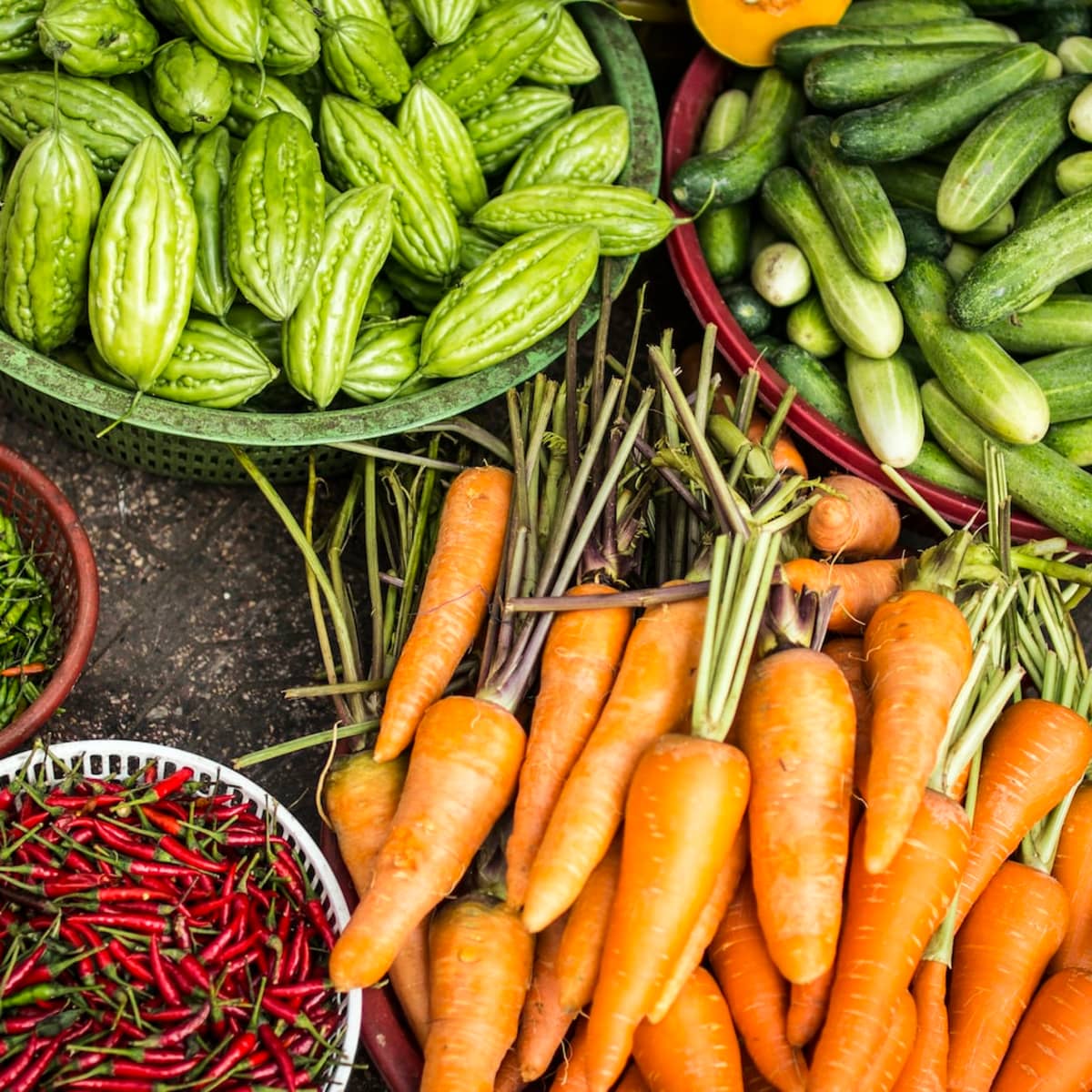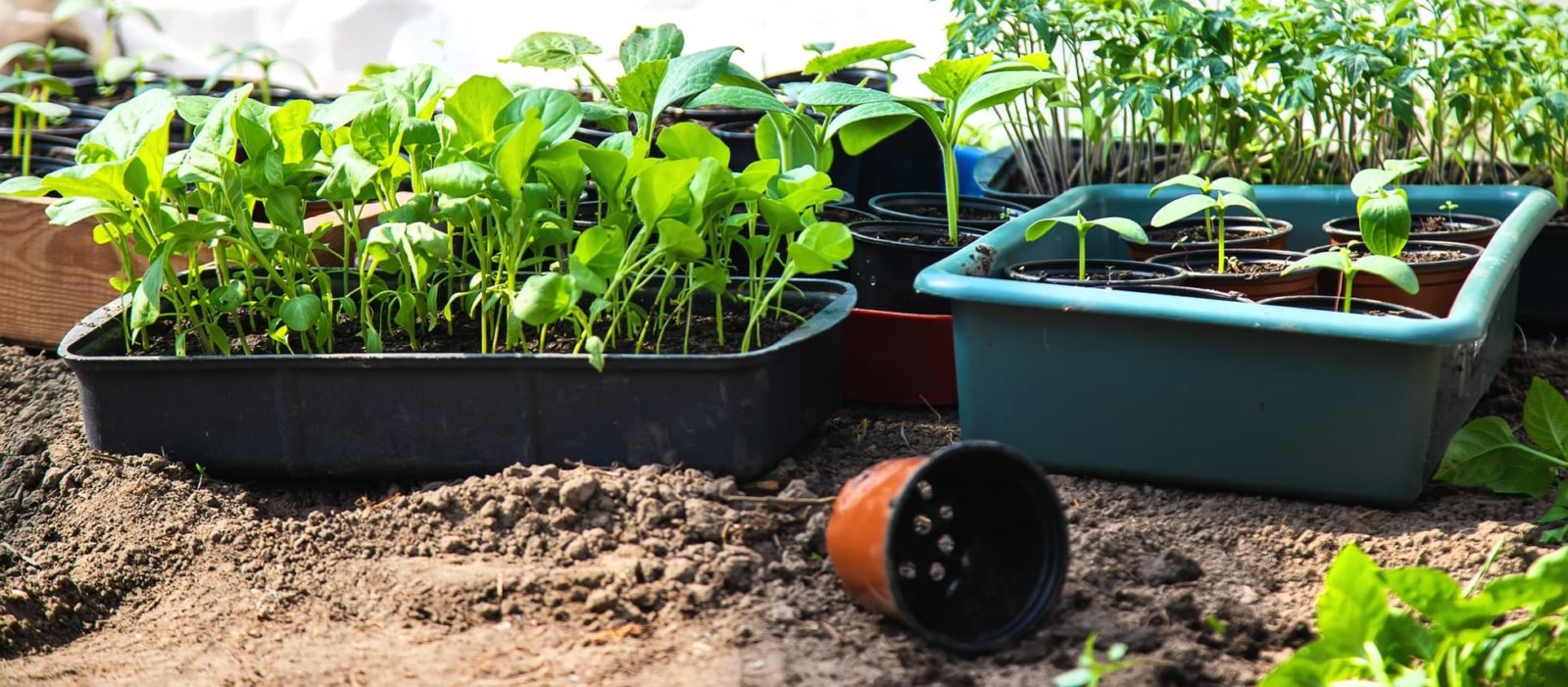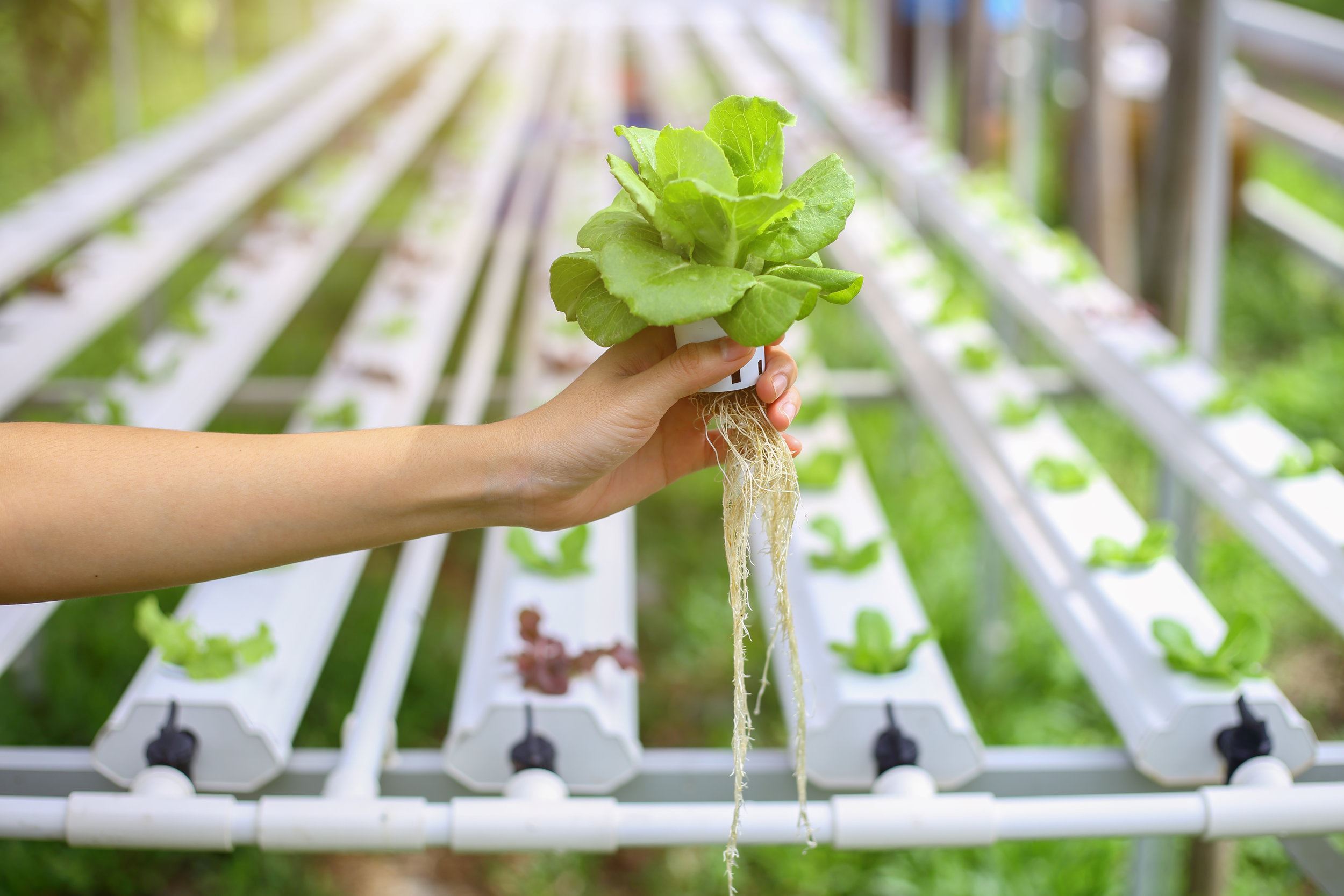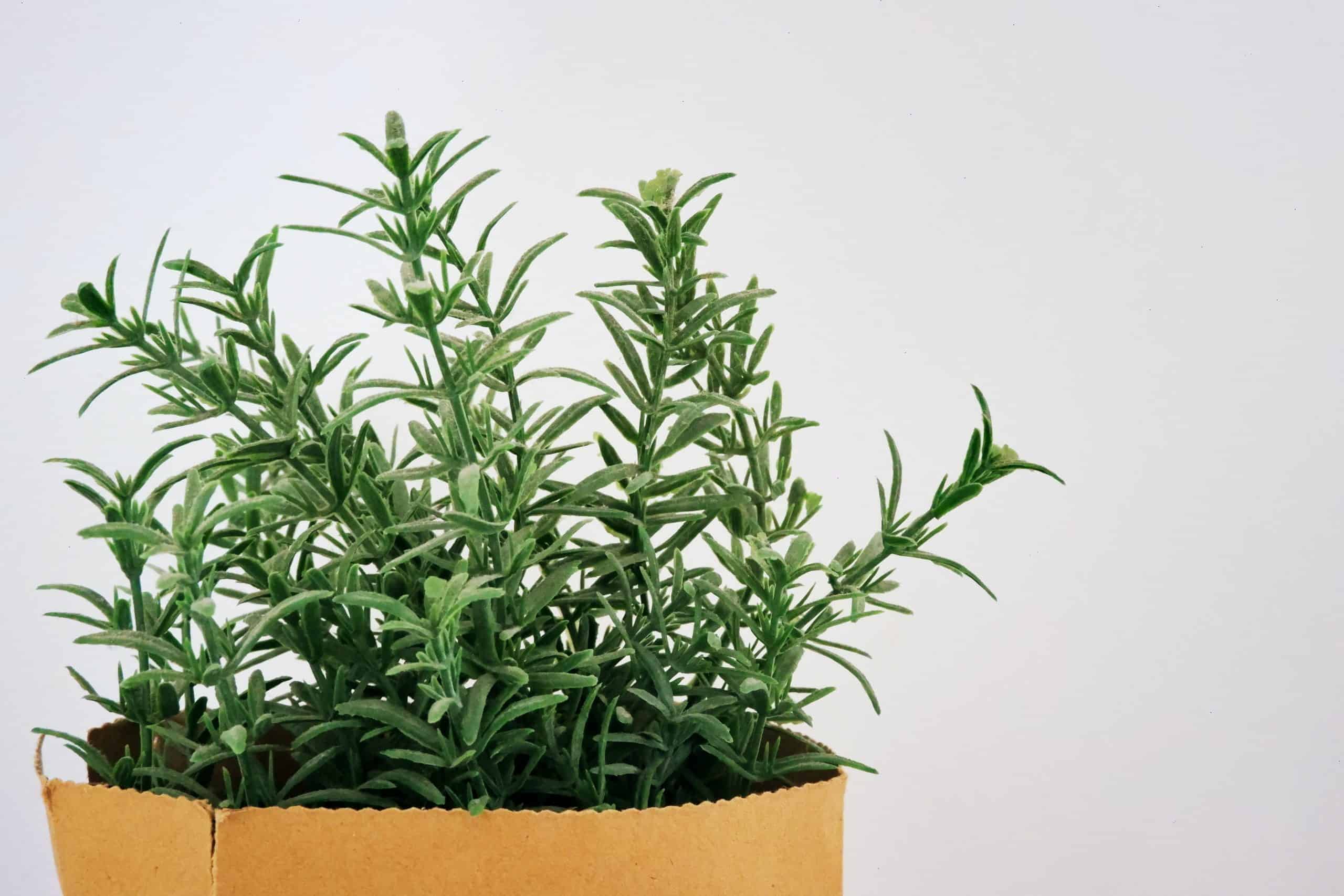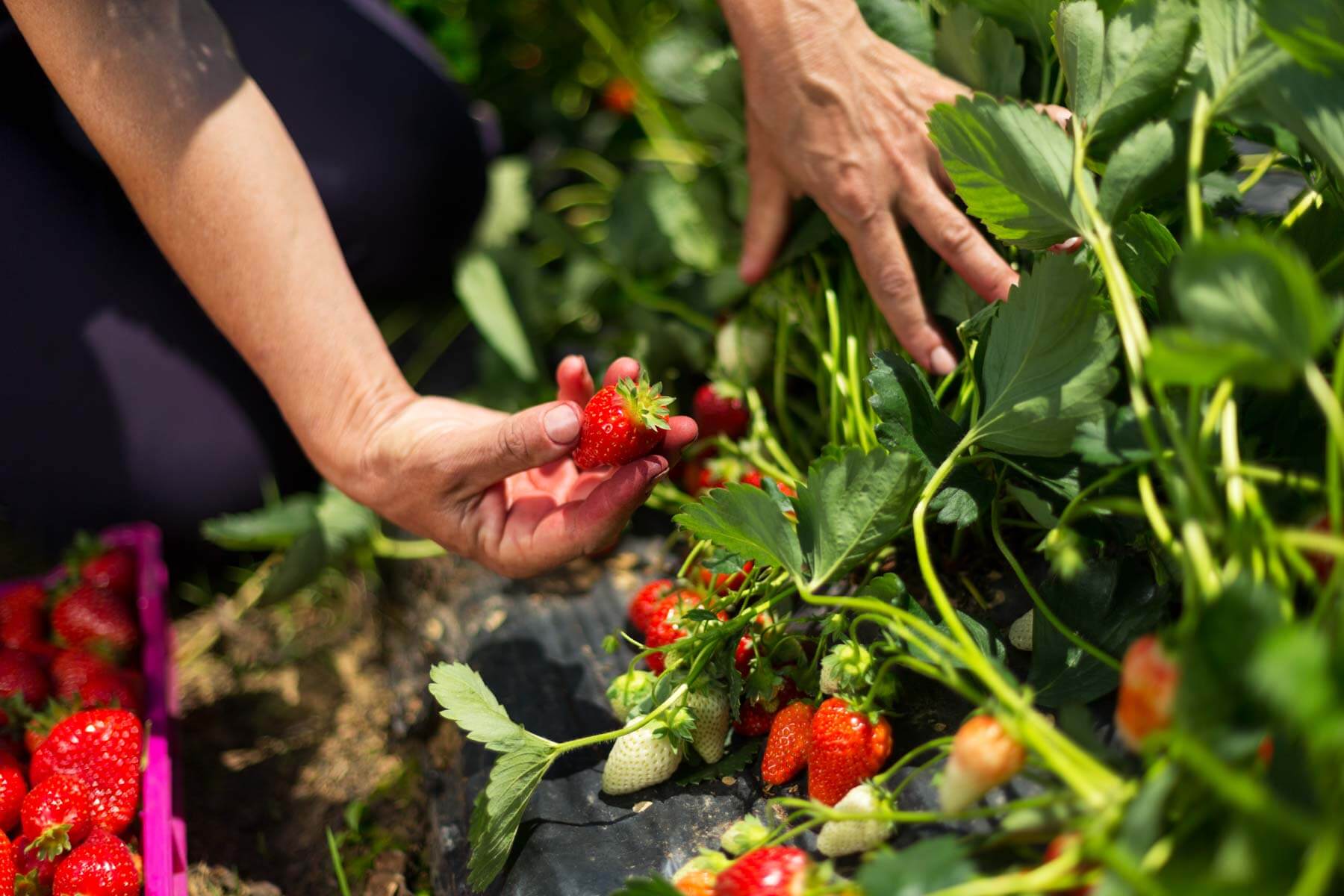Home>Gardening News and Trends>Latest News>What Vegetables Can I Plant In July
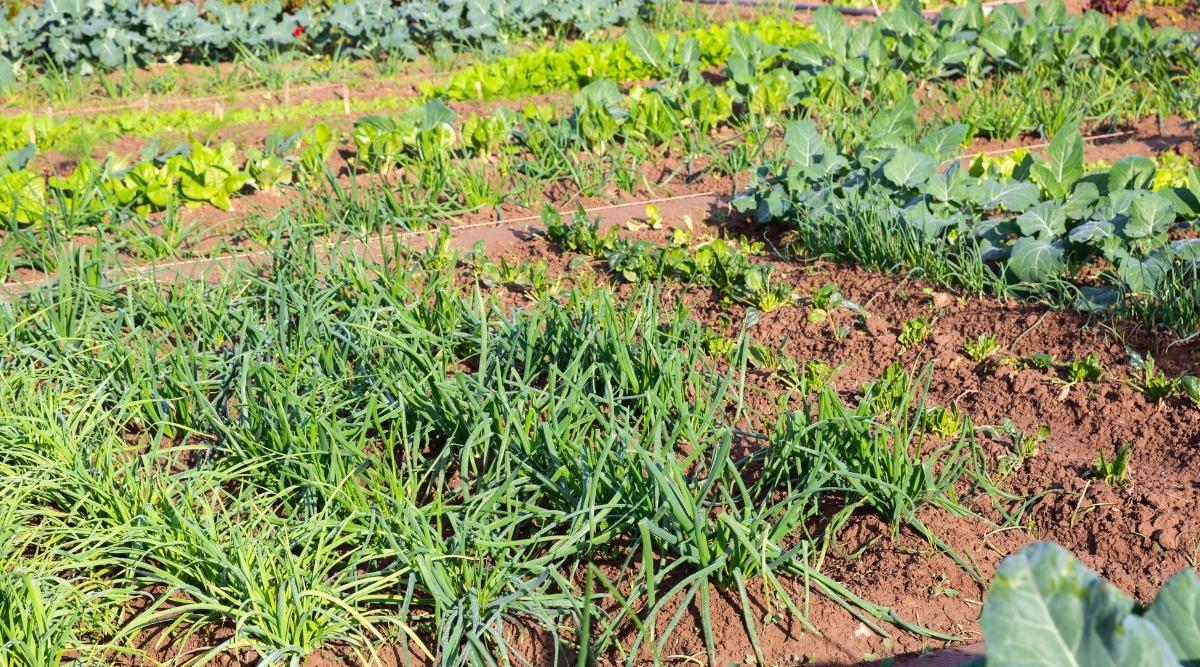

Latest News
What Vegetables Can I Plant In July
Modified: January 22, 2024
Discover the latest news on what vegetables you can plant in July. Get expert advice and find out which vegetables thrive during this season.
(Many of the links in this article redirect to a specific reviewed product. Your purchase of these products through affiliate links helps to generate commission for Chicagolandgardening.com, at no extra cost. Learn more)
Table of Contents
Introduction
When it comes to gardening, planting vegetables in the right season is crucial for a successful harvest. While many people associate planting vegetables with spring, there is still a wide range of vegetables that can be planted in July. The summer season brings its own set of challenges and opportunities for gardeners, and with the right knowledge and preparation, you can enjoy a bountiful harvest even in the heat of the summer.
Planting vegetables in July has several benefits. Firstly, the warm weather provides optimal conditions for rapid growth and development. The longer days and increased sunlight allow plants to take in more energy and nutrients, resulting in faster growth and healthier crops. Additionally, planting in July gives you the opportunity to extend your harvest season, as some vegetables take longer to mature and can be harvested well into the fall.
Another advantage of planting in July is the reduced competition from pests and diseases. By planting later in the season, you may avoid some of the common garden pests and diseases that peak during the spring months. Additionally, the warmer temperatures can help suppress the growth and spread of certain pests and pathogens, giving your vegetables a better chance of thriving.
However, there are factors that need to be considered before planting vegetables in July. The most important factor is the specific climate of your region. Different areas have different temperature and weather patterns, and it’s essential to choose vegetables that are suitable for your particular climate and planting zone. Some vegetables thrive in hot weather, while others prefer cooler temperatures. It’s also important to consider the level of sun exposure that your garden receives, as some vegetables require full sun, while others can tolerate partial shade.
So, if you’re eager to get your hands dirty and enjoy a productive summer garden, keep reading to discover the vegetables that can be successfully planted in July. From juicy tomatoes to crisp cucumbers, there are plenty of options to choose from that will thrive in the summer heat and provide you with a fresh and delicious harvest.
Benefits of Planting Vegetables in July
Planting vegetables in July offers several advantages for gardeners who are looking to maximize their harvests. While many people associate spring as the prime time for planting, there are unique benefits to planting in the middle of summer.
One of the key benefits of planting vegetables in July is the favorable weather conditions. The warm temperatures and ample sunlight provide optimal growing conditions for a wide range of plants. The increased heat and longer daylight hours allow plants to photosynthesize more efficiently, leading to faster growth and development. This means that the vegetables you plant in July will have a higher chance of reaching maturity before the end of the growing season.
Another advantage of planting in July is the potential for an extended harvest. By choosing vegetables with shorter maturation times or varieties that are suitable for cooler temperatures, you can continue harvesting well into the fall. This means you’ll have a longer window to enjoy fresh, homegrown produce and can reduce your reliance on store-bought vegetables.
Planting in July also allows you to take advantage of reduced competition from pests and diseases. Many pests, such as aphids and certain types of caterpillars, peak in population during the spring months. By starting your garden in July, you may be able to avoid some of the pest pressure that gardeners typically face earlier in the year. Additionally, the warmer temperatures can help suppress the growth and spread of certain diseases, reducing the risk of your plants falling victim to common fungal or bacterial infections.
Furthermore, planting vegetables in July can also demonstrate your resourcefulness and adaptability as a gardener. It showcases your ability to maximize your garden’s potential and make the most of the available growing season. It’s a great opportunity to experiment with different varieties and cultivation techniques that you may not have tried before.
Lastly, planting vegetables in July can bring a sense of joy and accomplishment as you witness the progress of your garden throughout the summer. Taking care of your plants, watching them grow, and eventually harvesting the fruits of your labor can be incredibly rewarding. It provides a connection to nature and allows you to savor the satisfaction of cultivating your own food.
Overall, planting vegetables in July offers various benefits, including optimal weather conditions, extended harvest opportunities, reduced pest and disease pressure, and the chance to explore your gardening skills. So, don’t hesitate to get your hands dirty and start your summer garden!
Factors to Consider Before Planting in July
Before diving into your summer planting endeavors, it’s important to take several factors into consideration. By being mindful of these factors, you can ensure optimal growth and success for your vegetables.
The first factor to consider is your specific climate and planting zone. Different regions have varying temperature and weather patterns, so it’s important to choose vegetables that are well-suited to your local conditions. Some plants thrive in hot weather, while others prefer cooler temperatures. Research your planting zone to determine which vegetables are most likely to flourish in your area during the summer months.
Next, consider the amount of sunlight your garden receives. Most vegetables require a minimum of six to eight hours of direct sunlight per day to thrive. Take note of any tall buildings, trees, or other structures that may cast shadows over your garden and potentially limit the amount of sunlight your plants receive. If you have limited sun exposure, focus on planting vegetables that tolerate partial shade.
Soil quality is another crucial factor to evaluate before planting in July. Conduct a soil test to determine its pH level and nutrient content. Most vegetables prefer a pH range between 6 and 7.5. If your soil is too acidic or alkaline, you can make adjustments by adding organic matter or using soil amendments. Additionally, ensure that your soil is well-draining to prevent waterlogging. This can be achieved by improving the structure of heavy clay soil or incorporating organic matter into sandy soil.
Water availability is also essential, especially during the hot summer months. Consider the availability of a reliable water source and your watering capabilities. Vegetables generally require about an inch of water per week. If rainfall is not sufficient, you may need to supplement with irrigation. Check your local water restrictions and plan accordingly to conserve water and prevent wastage.
Furthermore, take into account the pests and diseases that commonly affect vegetables in your area. Research local pests and diseases and implement preventive measures to minimize their impact on your plants. This may include practicing crop rotation, using organic pest control methods, or using row covers to protect your plants from pests and harsh weather conditions.
Last but not least, consider your gardening experience and available time commitment. Some vegetables require more time and effort to grow, while others are more forgiving for beginner gardeners. Be realistic about your capabilities and choose vegetables that align with your skill level and the amount of time you can dedicate to your garden.
By carefully considering these factors before planting in July, you can set yourself up for a successful and thriving summer garden. Taking the time to evaluate your climate, sunlight, soil quality, water availability, pest and disease risks, and your own capacity will help you make informed decisions and optimize your chances of a fruitful harvest.
Vegetables That Can Be Planted in July
If you’re eager to start your summer garden in July, you’ll be pleased to know that there is a wide variety of vegetables that can be successfully planted during this time. From juicy tomatoes to crunchy cucumbers, here are some vegetables that thrive when planted in July:
- Tomatoes: July is the perfect time to plant tomato seedlings. Tomatoes love warm weather and require full sun exposure. Choose varieties that have a shorter maturation time, such as cherry tomatoes or early-season varieties, to ensure a bountiful harvest before the end of the growing season.
- Cucumbers: Cucumbers are fast-growing vegetables that do well in the summer heat. Plant seedlings or sow cucumber seeds directly into the soil to enjoy an abundant crop of crisp cucumbers within a couple of months. Provide support for vining cucumbers by using trellises or stakes.
- Green Beans: Green beans are a versatile and easy-to-grow option for July planting. Whether you choose bush or pole varieties, beans are known for their rapid growth and plentiful yields. Sow the seeds directly in the soil and provide them with well-draining soil and regular watering for optimal results.
- Squash: Summer squash, such as zucchini and yellow squash, are well-suited for July planting. These fast-growing vegetables thrive in warm temperatures and can be ready for harvest within a few weeks. Make sure to provide them with fertile soil and ample space to spread out.
- Corn: If you have sufficient space and a sunny garden, July is a great time to plant corn. Corn is a warm-season crop that requires both heat and ample water. Plant the corn seeds in blocks rather than rows to improve pollination, and ensure good soil fertility to support the vigorous growth of this tall and productive vegetable.
- Peppers: Peppers, including bell peppers and chili peppers, are ideal for planting in July. They love the warmth and require a long growing season to reach maturity. Choose pepper varieties that are suitable for your desired taste and level of spiciness. Provide them with well-draining soil and regular watering for optimal growth.
- Eggplant: Eggplants thrive in the summer heat and can be successfully planted in July. Opt for compact or dwarf varieties if you have limited space. Ensure that the soil is rich in organic matter and provides good drainage to support the growth of these flavorful and versatile vegetables.
- Okra: Okra is a plant that thrives in hot climates, making it an excellent choice for July planting. Its tall stalks and vibrant green pods add beauty to the garden while providing a delicious harvest. Plant okra seeds directly in well-draining soil and provide them with full sun exposure for optimal growth.
- Herbs: Many herbs can be planted in July and enjoyed throughout the summer. Basil, cilantro, mint, and parsley are just a few examples of herbs that thrive in warm weather. Whether you choose to grow them in containers or directly in the garden, herbs are a fantastic addition to any culinary enthusiast’s garden.
By selecting these vegetables and following proper care and maintenance practices, you can enjoy a diverse and abundant harvest from your summer garden.
Tomatoes
Tomatoes are a popular choice for many gardeners, and July is an ideal time to plant tomato seedlings. These juicy, nutrient-rich fruits love warm weather and require full sun exposure to thrive. Here’s everything you need to know about planting tomatoes in July:
Firstly, choose the right tomato variety for your garden. There are countless tomato cultivars available, including cherry tomatoes, beefsteak tomatoes, and heirloom varieties. Consider factors such as size, flavor, and disease resistance when selecting your tomato plants.
Before planting, prepare the soil by removing weeds and incorporating organic matter, such as compost or well-rotted manure, to improve soil fertility and drainage. Tomatoes prefer well-draining soil with a pH level between 6 and 7.5. If your soil is too acidic or alkaline, adjust it accordingly with organic soil amendments.
When it comes to planting, dig a hole slightly larger than the root ball of the tomato seedling. Gently remove the seedling from its container, being careful not to damage the roots, and place it in the hole. Fill the hole with soil and firm it gently around the base of the plant. Provide adequate spacing between tomato plants to ensure proper air circulation and prevent the spread of diseases.
Tomatoes require consistent watering to support healthy growth. Water deeply and evenly, ensuring the roots receive enough moisture. However, be cautious not to overwater, as this can lead to root rot. Mulching around the base of the plants can help retain moisture in the soil and suppress weed growth.
Supporting tomato plants is essential to prevent them from sprawling on the ground and potentially developing diseases. Use stakes, trellises, or cages to support the plants as they grow. Secure the stems to the support structure with soft ties to avoid damaging the plant.
Regularly monitor your tomato plants for pests and diseases. Common tomato pests include aphids, whiteflies, and tomato hornworms. Inspect the plants frequently and take action at the first signs of infestation. Using organic pest control methods or introducing beneficial insects can help manage pest problems.
Pruning is another important aspect of tomato care. Pinch off any suckers that form in the leaf axils to direct the plant’s energy towards fruit production. Pruning also helps improve air circulation and reduce the risk of diseases.
Finally, as your tomato plants start to bear fruit, provide support for the heavy branches. Use tomato cages or stakes to prevent the branches from breaking under the weight of the tomatoes.
With proper care and maintenance, your tomato plants will reward you with a plentiful harvest. From fresh salads to homemade sauces, tomatoes are a versatile and delicious addition to any kitchen.
Cucumbers
Cucumbers are another fantastic vegetable to plant in July. These crunchy and refreshing vegetables thrive in warm weather and can be easily grown in a variety of garden settings. Here’s what you need to know about planting cucumbers in July:
Start by selecting the right cucumber variety for your garden. There are two main types to consider: slicing cucumbers and pickling cucumbers. Slicing cucumbers are typically larger and are best enjoyed fresh, while pickling cucumbers are smaller and ideal for making pickles. Within each category, you’ll find a range of cultivars with different flavors, textures, and maturation times.
Cucumbers require plenty of sunlight, at least six to eight hours per day. Choose a sunny location in your garden that offers good air circulation. If you have limited space, consider growing cucumbers on a trellis or fence to save space and facilitate better airflow around the plants.
Prepare the soil by removing any weeds and incorporating organic matter, such as compost or well-rotted manure. Cucumbers thrive in rich, fertile soil with good drainage. They prefer a slightly acidic pH level between 6 and 6.8. If your soil is too alkaline, you can lower its pH level by adding organic matter or using soil amendments.
When planting cucumbers, sow the seeds directly into the soil. Create small hills or mounds and plant three to four cucumber seeds per hill, about one inch deep. Space the hills at least two to three feet apart to allow the vines to spread comfortably. Once the seedlings emerge and grow a few inches tall, thin them, leaving the strongest plant per hill.
Ensure that the soil stays consistently moist, providing the plants with an inch of water per week. Water the base of the plants in the morning to allow the foliage to dry before nighttime and prevent the development of fungal diseases. Avoid overwatering, as this can lead to root rot.
As the cucumber plants begin to grow, provide support for vining varieties by using trellises or stakes. This will help keep the plants upright and reduce the risk of fruit rotting on the ground. Train the vines to climb the supports gently, guiding them as needed.
Regularly check your cucumber plants for pests such as aphids, cucumber beetles, and powdery mildew. Remove any pests by hand or use organic pest control methods to manage infestations. Proper spacing, good airflow, and diligent pest management can help prevent common cucumber diseases.
Harvest cucumbers when they reach the desired size. Most slicing cucumbers are best when harvested between six and eight inches in length, while pickling cucumbers are typically picked when they are two to four inches long. Regularly pick mature cucumbers to encourage the production of new fruits.
Whether enjoyed fresh in salads, sandwiches, or as a refreshing snack, cucumbers are a delightful addition to your summer garden. With proper care and attention, you’ll be rewarded with a plentiful harvest of crisp and delicious cucumbers.
Green Beans
Green beans are a versatile and easy-to-grow vegetable that thrives in the summer heat. If you’re looking to add a nutritious and delicious crop to your garden in July, green beans are an excellent choice. Here’s how to successfully plant and grow green beans:
Firstly, decide between bush beans or pole beans. Bush beans are compact plants that don’t require any additional support, while pole beans are vining plants that need trellises or stakes for vertical growth. Choose the type that best suits your garden space and preferences.
Before planting, prepare the soil by removing weeds and incorporating organic matter, such as compost or well-rotted manure, to improve soil fertility. Green beans prefer well-draining soil with a pH level between 6 and 7.5. If the pH is too low or high, adjust it by adding organic soil amendments.
Plant green bean seeds directly into the soil. Make small trenches or furrows, about one inch deep and 12 to 18 inches apart for bush beans, or two to three feet apart for pole beans. Space the seeds about two to three inches apart along the row. Cover the seeds with soil and gently firm it around them.
Provide the beans with consistent water to keep the soil evenly moist. Aim for at least one inch of water per week, either from rainfall or supplemental irrigation. Avoid overhead watering, as wet foliage can increase the risk of disease. Water the base of the plants instead.
Green beans are relatively low-maintenance, but they do require regular weeding. Keep the area around the plants free from weeds, as competition for nutrients and water can hinder their growth. Mulching can help suppress weed growth and conserve soil moisture.
If you’re growing pole beans, set up trellises, stakes, or a bean teepee for support. Train the vines to climb the structures as they grow to keep them off the ground. This not only saves space but also reduces the risk of disease and makes harvesting easier.
Green beans are typically ready for harvest in about 50 to 60 days from planting. Harvest the beans when they are young and tender, before they become tough and fibrous. Gently snap or cut the beans from the plants, being careful not to damage the stems or nearby foliage. Regularly picking mature beans encourages the plant to produce more.
Be aware of common pests that can affect green beans, such as aphids, bean beetles, and spider mites. Monitor your plants regularly and take measures to address any pest issues that arise. Organic insecticidal soaps and companion planting with insect-repellent herbs, such as basil or marigolds, can help deter pests.
Green beans are a nutritious addition to salads, stir-fries, and side dishes. They can also be preserved by canning, freezing, or pickling for later use. With proper care and attention, you’ll enjoy a bountiful harvest of crunchy and flavorful green beans from your summer garden.
Squash
Squash is a versatile and abundant vegetable that thrives in the warmth of summer. If you’re considering planting in July, squash is an excellent choice that will reward you with an abundant harvest. From zucchini to yellow squash, here’s what you need to know about growing squash:
When selecting squash varieties, consider the available space in your garden and personal preferences. Summer squash, such as zucchini and yellow squash, are harvested when they’re young and tender. Winter squash, like butternut or acorn squash, have a longer growing season and are harvested when fully matured. Choose the type that suits your culinary needs and the length of your growing season.
Squash plants thrive in full sun, so choose a location in your garden that receives at least six to eight hours of direct sunlight each day. The soil should be rich in organic matter and well-draining. Amend the soil with compost or well-rotted manure to improve its fertility and structure.
Plant squash seeds directly into the soil at a depth of about one inch. Space the seeds according to the recommended guidelines on the seed packet, typically about 24 to 36 inches apart for bush varieties and 48 to 60 inches apart for vining varieties. If transplanting seedlings, handle them carefully to avoid damaging the delicate roots, and plant them at the same depth as they were in the original container.
Water the squash plants consistently, keeping the soil evenly moist but not waterlogged. Provide a deep watering at least once a week, aiming for about an inch of water. Mulching around the plants can help retain soil moisture and suppress weed growth, but avoid allowing the mulch to come into direct contact with the stems, as this can lead to stem rot.
Squash plants are heavy feeders, so regular fertilization is essential for optimal growth. Use a balanced organic fertilizer or incorporate a slow-release fertilizer into the soil before planting. Follow the manufacturer’s instructions for application rates and frequency, and be mindful of overfertilizing, as it can lead to excessive foliage growth at the expense of fruit production.
Monitor your squash plants for pests such as squash bugs, cucumber beetles, and powdery mildew. Handpick the insects off the plants, or if necessary, treat with organic pest control methods. Maintaining good air circulation and spacing between plants can help reduce the risk of disease.
Harvest summer squash when they reach a manageable size, typically when they are around six to eight inches long for zucchini and yellow squash. Pick winter squash when the fruits are fully mature and the skin has hardened. Use a sharp knife or pruners to cut the squash from the plant, leaving a short stem attached.
Squash is a versatile vegetable that can be used in a variety of recipes, from soups and stews to roasted vegetable medleys. Preserve any excess harvest by freezing, canning, or dehydrating for later use. With proper care and attention, your squash plants will provide you with a rewarding and delicious harvest throughout the growing season.
Corn
Corn is a staple crop that thrives in the warm summer months. If you’re considering planting in July, corn is a fantastic option that can provide you with fresh, sweet ears ready for harvest in a few months. Here’s what you need to know about growing corn:
Choose the right corn variety for your garden. There are three main types of corn: sweet corn, dent corn, and popcorn. Sweet corn is the most commonly grown for fresh eating, with several delicious cultivars available in various sweetness levels. Dent corn is typically used for animal feed or processed into cornmeal, while popcorn is grown for its unique popping characteristics.
Before planting, prepare the soil by removing weeds and incorporating organic matter, such as compost or well-rotted manure, to improve soil fertility. Corn is a heavy nitrogen feeder, so consider applying a balanced organic fertilizer or incorporating a slow-release nitrogen-rich fertilizer into the soil before planting.
Corn is wind-pollinated, so it’s best to plant it in blocks rather than single rows to ensure optimal pollination. Plant seeds about one inch deep and six to eight inches apart within each row. Space the rows about 24 to 36 inches apart, allowing ample room for the plants to grow and develop strong root systems.
Water the corn plants consistently, providing about one inch of water per week. Keep the soil evenly moist, especially during dry periods. Water at the base of the plants to minimize wetting the foliage, as wet leaves can promote the development of fungal diseases.
Keep the corn patch weed-free to reduce competition for nutrients and water. Hand-pull weeds, being careful not to disturb the shallow corn roots. Mulching between the rows can help suppress weed growth and conserve soil moisture.
Tall corn stalks can be vulnerable to wind damage, so consider providing support if necessary. As the plants grow, gently mound soil around the base of the stalks to provide additional stability. This can be particularly important in areas prone to strong winds.
Monitor your corn plants for pests such as corn earworms, armyworms, and corn borers. Regularly check the ears for signs of insect damage and take necessary measures such as handpicking or using organic pest control methods.
Harvest corn when the silks on the ears turn brown and dry, and the kernels are plump and milky when punctured. Peel back the husk slightly to check for maturity. To harvest, hold the stalk firmly and twist the ear downward to remove it from the plant. Enjoy the sweet, fresh corn right away or preserve it by blanching and freezing for later use.
Corn is a delicious addition to summer meals, whether boiled, grilled, or added to soups and salads. With the appropriate care and attention, you’ll be rewarded with a bountiful harvest of sweet and tender corn from your summer garden.
Peppers
Peppers are a versatile and vibrant addition to any garden, and planting them in July can yield a bountiful harvest of these flavorful and nutritious vegetables. From bell peppers to spicy chili peppers, here’s what you need to know about growing peppers:
Choose the right pepper varieties for your garden. There are numerous cultivars available, each offering unique flavors, colors, shapes, and levels of heat. Whether you prefer sweet or spicy peppers, look for varieties that are well-suited to your climate and growing conditions.
Peppers thrive in full sun, so select a location in your garden that receives at least six to eight hours of direct sunlight every day. The soil should be rich in organic matter and well-draining. Amend the soil with compost or well-rotted manure to improve its fertility and structure.
Plant pepper seedlings in July or start them from seeds indoors earlier in the year for transplantation. If transplanting, dig a hole slightly larger than the root ball of the seedling and gently remove it from its container. Place the seedling in the hole and backfill with soil, firming it gently around the base of the plant.
Water pepper plants consistently to keep the soil evenly moist. Aim for about an inch of water per week, either through rainfall or supplemental irrigation. Avoid overwatering, as peppers are susceptible to root rot. Mulching around the plants can help retain soil moisture and suppress weed growth.
Peppers are generally heavy feeders, so regular fertilization is important for optimal growth and fruit production. Use a balanced organic fertilizer or apply a slow-release fertilizer according to the manufacturer’s instructions. Be careful not to overfertilize, as this can result in excessive foliage growth at the expense of fruit development.
Support larger pepper varieties by staking them or using tomato cages. This prevents the heavy branches from bending or breaking as the peppers mature. Secure the stems to the supports with soft ties to avoid damaging the plants.
Monitor your pepper plants for pests such as aphids, pepper maggots, and pepper hornworms. Remove any pests by hand or use organic pest control methods to manage infestations. Companion planting with insect-repellent herbs, such as basil or marigolds, can help deter pests.
Harvest peppers when they reach the desired size and color. Most peppers can be picked when they are green, but they will continue to ripen and change color if left on the plant. Use a sharp knife or pruners to cut the peppers from the plant, leaving a short stem attached.
Enjoy freshly harvested peppers in salads, stir-fries, salsas, or roasted dishes. They can also be preserved by freezing, pickling, or drying for future culinary endeavors.
With proper care and attention, your pepper plants will reward you with a vibrant and flavorful harvest of peppers that will add a burst of tastiness to your dishes throughout the summer and beyond.
Eggplant
Eggplant is a versatile and delicious vegetable that can be successfully planted in July. With their glossy purple skin and creamy flesh, eggplants add both beauty and taste to your summer garden. Here’s what you need to know about growing eggplants:
Choose the right eggplant variety for your garden. There are various cultivars available, ranging from the traditional large purple types to smaller, uniquely colored varieties. Consider factors such as flavor, size, and growing conditions when selecting your eggplant plants or seeds.
Ensure that your eggplant plants receive full sun, ideally at least six to eight hours per day. Select a location in your garden that offers protection from strong winds. The soil should be well-draining and rich in organic matter. Incorporate compost or well-rotted manure into the soil before planting to improve its texture and fertility.
Eggplants are typically started from transplants rather than seeds. If using seedlings, gently remove them from their containers and transplant them into the prepared soil. Space them about two to three feet apart to allow for proper air circulation and growth.
Water the eggplant plants consistently, aiming to keep the soil evenly moist. Avoid overwatering, as eggplants are susceptible to root rot. Mulching around the plants can help retain soil moisture and suppress weed growth. Apply a layer of organic mulch, such as straw or compost, taking care not to mound it against the stem to prevent rotting.
Feed the eggplant plants with a balanced organic fertilizer or a slow-release fertilizer formulated for vegetables. Follow the instructions on the packaging for application rates and frequency. Generally, it is recommended to fertilize eggplants every four to six weeks during the growing season.
Protect your eggplant plants from pests such as aphids, flea beetles, and spider mites by regularly inspecting the leaves and stems. If necessary, use organic pest control methods or introduce beneficial insects to manage infestations. Proper spacing, adequate airflow, and regular watering practices can help prevent common diseases.
Eggplants typically produce beautiful bell-shaped fruits that are ready for harvest when they reach their mature color and size. Depending on the variety, this may be when the skin turns deep purple, glossy, or even striped. Use a sharp knife or pruning shears to cut the eggplants from the plant, leaving a short stem attached.
Eggplants have a wide range of culinary uses, from grilling and frying to baking and roasting. They can be incorporated into Mediterranean dishes, curries, stir-fries, and more. Enjoy the freshly harvested eggplants in your favorite recipes or explore new culinary adventures.
By providing the right growing conditions and timely care, your eggplant plants will reward you with a crop of flavorful and versatile eggplants to elevate your summer culinary creations.
Okra
Okra is a heat-loving vegetable that thrives in the summer months, making it an excellent choice for planting in July. Known for its unique shape and mucilaginous texture, okra is a versatile ingredient in various cuisines. Here’s what you need to know about growing okra:
Choose the right okra variety for your garden. There are several types available, including green, red, and even spineless varieties. Consider factors such as flavor, size, and growth habit when selecting your okra seeds or seedlings.
Ensure that your okra plants receive full sun exposure, as they love warm weather. Select a location in your garden where they will receive at least six to eight hours of direct sunlight per day. The soil should be well-draining, rich in organic matter, and have a pH level between 6 and 7.5.
Directly sow okra seeds in the garden soil at a depth of about half an inch, spaced about 12 to 18 inches apart. Alternatively, you can start okra seedlings indoors a few weeks before July and transplant them once they have developed a strong root system. Harden off the seedlings by gradually exposing them to outdoor conditions before planting.
Water the okra plants regularly, providing about an inch of water per week. Okra plants require consistent moisture and are relatively drought-tolerant. Water deeply and avoid overhead watering to prevent the development of fungal diseases. Apply mulch around the plants to retain soil moisture and suppress weed growth.
Okra plants are typically tall and can benefit from staking. As the plants grow, provide support by using stakes or trellises. This will help the plants stay upright and prevent them from toppling over under the weight of the okra pods.
Regularly inspect the okra plants for pests such as aphids, flea beetles, or stink bugs. Handpick any pests you see or use organic pest control methods to manage infestations. Encouraging beneficial insects, such as ladybugs or lacewings, can also help control pests in an eco-friendly manner.
Harvest okra pods when they are young and tender, typically about 2 to 4 inches long. Harvesting regularly encourages the plants to produce more pods. Use a sharp knife or shears to cut the pods from the plant, being careful not to damage the stem or other developing pods.
Enjoy okra in various culinary preparations, such as stir-fries, stews, soups, or even fried as a crispy snack. The sliminess that okra is known for can be reduced by using high-heat cooking methods, such as stir-frying or grilling, or by pairing it with acidic ingredients like tomatoes or lemon juice.
With the right care and attention, your okra plants will reward you with a bountiful harvest of these unique and nutritious pods throughout the summer season. Explore different recipes and culinary traditions to fully enjoy the flavors and versatility of this fascinating vegetable.
Herbs
Planting herbs in July can provide you with a fresh and aromatic addition to your garden. Herbs are not only flavorful but also versatile, adding depth to a variety of dishes. With their ease of growth and low maintenance, herbs are a fantastic choice for any gardener. Here’s what you need to know about growing herbs:
Choose the herbs that best suit your culinary preferences and growing conditions. Popular herb choices include basil, cilantro, parsley, mint, rosemary, thyme, and oregano. Consider the specific flavors, aroma, and uses of each herb as you make your selection.
Herbs generally thrive in sunny locations, so choose a spot in your garden that receives at least six to eight hours of direct sunlight per day. Most herbs prefer well-draining soil with a pH level between 6 and 7.5. If needed, amend the soil with compost or organic matter to improve its structure and fertility.
Start by either planting herb transplants or sowing herb seeds directly into the soil. If using transplants, gently remove them from their containers and plant them at the same depth as they were in their original pots. Space the transplants according to their specific plant requirements, usually a few inches apart.
Water your herb plants consistently to keep the soil evenly moist. Avoid overwatering, as herbs generally do not like overly wet conditions. Monitor the moisture levels of the soil and water as needed, especially during dry periods.
Pinch off or trim the top portions of your herbs regularly to encourage bushier growth and prevent them from becoming leggy. Harvesting the leaves and stems for culinary use will also promote continuous growth for a fresh supply of herbs throughout the growing season.
Keep an eye out for any pests that may affect your herbs, such as aphids or caterpillars. Inspect the plants regularly and take measures to manage pest infestations. Using organic pest control methods, such as handpicking or introducing beneficial insects, is recommended to maintain a healthy and chemical-free garden.
Harvest your herbs when the leaves are young and flavorful, just before the plant starts to flower. Harvesting in the morning, after the dew has evaporated but before the heat of the day, will ensure the best flavor and aroma in your herbs.
Once harvested, herbs can be used in a myriad of ways – in fresh salads, as seasoning in savory dishes, in herbal teas, or preserved through drying or freezing for later use. Explore different culinary uses and experiment with blending different herbs to create unique flavors.
With proper care and attention, your herb garden will provide you with a bountiful supply of aromatic and flavorful herbs to enhance the taste of your favorite dishes and add a touch of freshness to your culinary creations.
Conclusion
Planting vegetables in July offers a wonderful opportunity to enjoy a fruitful and vibrant summer garden. The warm weather, extended daylight hours, and optimal growing conditions create an ideal environment for a variety of vegetables to thrive. From the juicy tomatoes and crispy cucumbers to the hearty squash and sweet corn, there are plenty of options to choose from when selecting vegetables to plant in July.
However, before diving into your summer planting endeavors, it’s important to consider factors such as climate, sunlight, soil quality, water availability, and pest management. By taking these factors into account, you can set the stage for a successful and rewarding gardening experience.
When planting vegetables in July, remember to select appropriate varieties that are well-suited to your specific climate and growing conditions. Proper soil preparation, watering, fertilizing, and pest management are essential for healthy plant growth and abundant yields. Regular monitoring and maintenance will help you identify and address any issues that may arise throughout the growing season.
As you tend to your summer garden, immerse yourself in the joy of gardening and the excitement of watching your vegetables grow. Take pride in your ability to cultivate and enjoy fresh, homegrown produce that not only nourishes your body but also delights your taste buds.
Whether you’re a seasoned gardener or a beginner, planting vegetables in July can be a fulfilling and enriching experience. So grab your gardening tools, roll up your sleeves, and get ready to enjoy the bounties of a successful summer garden.

